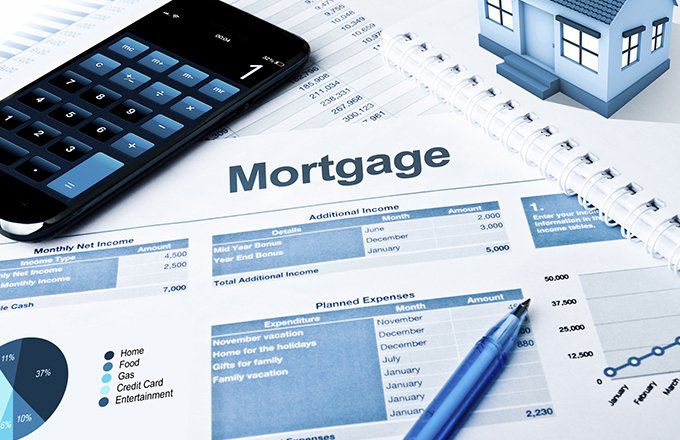Advertisement

Kelly Walker Dec 10, 2024
Difference Between 15-Year and 30-Year Mortgage
56656

Kelly Walker Oct 23, 2024
Top 12 Recurring Billing Software in 2023 for Seamless Transactions
90191

Rick Novak Dec 24, 2024
Form 1040 V: Payment Voucher
88146

Kelly Walker Sep 28, 2024
What Is a Balanced Fund?
13553
Advertisement
An Overview of Adjustable-Rate Mortgage
Aug 25, 2024 By Kelly Walker
The interest rate for an ARM is usually fixed for a certain period, typically 5 to 10 years, after which the interest rate can adjust based on market conditions. While ARMs can offer lower initial interest rates than fixed-rate mortgages, they come with risks and uncertainties, significantly when interest rates increase.
Adjustable-Rate Mortgages Working
Before discussing what happens when interest rates go up, it's essential to understand how adjustable-rate mortgages work. The index reflects the general level of interest rates in the economy. In addition to the index, an ARM has a margin, a fixed percentage added to the index to determine the interest rate. For example, if the index is 3% and the margin is 2%, the interest rate on the ARM would be 5%.
The interest rate on an ARM is usually fixed for a certain period, called the initial rate period, typically 5 to 10 years. During this period, the borrower pays a fixed interest rate, regardless of any changes in the index. After the initial rate period, the interest rate can adjust based on changes in the index. The adjustment period is the frequency at which the interest rate can adjust after the initial rate period. It is usually one year or six months. For example, if the adjustment period is one year and the initial rate period is 5 years, the interest rate can adjust every year starting from year 6.
What Happens When Interest Rates Go Up?
When interest rates go up, the interest rate on an adjustable-rate mortgage can also go up. This is because the interest rate on an ARM is tied to an index, which reflects the general level of interest rates in the economy. If the index goes up, the interest rate on the ARM will also go up. The amount that the interest rate can adjust is usually capped to protect borrowers from large payment shocks. The cap can be either a periodic cap or a lifetime cap.

For example, if the initial interest rate on an ARM is 3% and the periodic cap is 2%, the interest rate can only adjust to a maximum of 5% at each adjustment period. If the lifetime cap is 6%, the interest rate can always be at most 9% over the life of the loan, regardless of any changes in the index. When interest rates go up, the monthly payment on an ARM can also go up. This is because the monthly payment is based on the interest rate and the loan balance. If the interest rate increases, the monthly payment will also go up, assuming the loan balance remains the same. These steps allow borrowers to manage their finances better and make informed mortgage decisions.
Ways Borrowers Prepare for Potential Changes
Borrowers with adjustable-rate mortgages can prepare for potential changes in interest rates by understanding their loan terms and financial situation. Here are some tips for borrowers with ARMs:
- Know the loan terms: Borrowers should understand the terms of their ARM, including the initial rate period, the adjustment period, the index, the margin, and the caps. Knowing these terms can help borrowers anticipate potential changes in their monthly payments and plan accordingly.
- Monitor the index: Borrowers should monitor the index that their ARM is tied to and stay informed about any changes in interest rates. This can help them anticipate potential changes in their monthly payments and plan accordingly.
- Consider refinancing: If interest rates are expected to rise significantly, borrowers may want to consider refinancing their ARM into a fixed-rate mortgage. A fixed-rate mortgage offers a stable interest rate and monthly payment, providing greater certainty and predictability for borrowers.
- Make extra payments: If borrowers are concerned about potential changes in their monthly payments, they may consider making extra payments on their ARM. This can help them pay down their loan balance faster and reduce the impact of any future interest rate increases.
- Plan for the worst-case scenario: Borrowers should also plan for the worst-case scenario, such as a significant increase in interest rates. This can include building up an emergency fund, cutting back on expenses, or exploring other sources of income. The index reflects the general level of interest rates in the economy.


Rick Novak Aug 13, 2024
Investment Banking vs. Private Equity: What's the Difference?
99810

Kelly Walker Dec 24, 2024
How Disney Makes Money
62899

Kelly Walker Nov 20, 2024
Why Wealthy Individuals Can't Afford to Overlook Life Insurance
75397

Kelly Walker Oct 25, 2024
Explaining Transfer Taxes: What You Need to Know
758

Rick Novak Sep 29, 2024
What Is a Construction Bond?
82683

Kelly Walker Sep 11, 2024
American Express Personal Loans: An Overview
7528

Rick Novak Nov 05, 2024
Land Your Dream Job: Steps to Become a Private Equity Associate
99704

Kelly Walker Aug 29, 2024
Top Life Insurance Companies for Children
54010